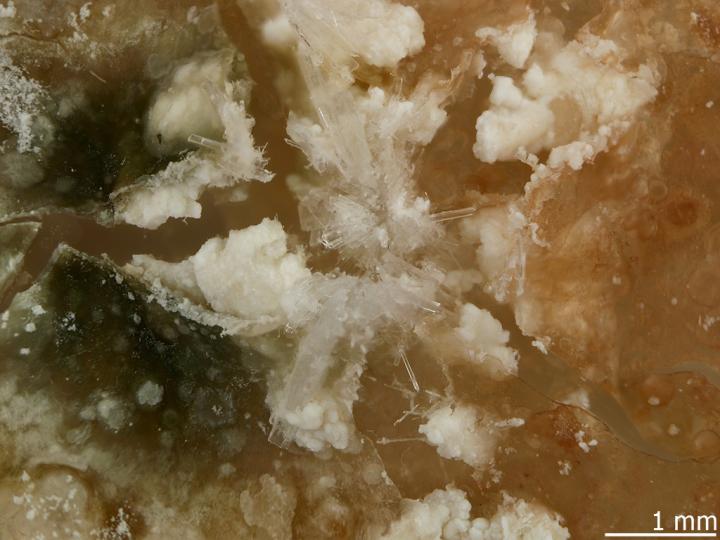New research predicts that Earth has more than 1,500 undiscovered minerals and that the exact mineral diversity of our planet is unique and could not be duplicated anywhere in the cosmos. Minerals form from novel combinations of elements. These combinations can be facilitated by both geological activity, including volcanoes, plate tectonics, and water-rock interactions, and biological activity, such as chemical reactions with oxygen and organic material.
Nearly a decade ago, Carnegie's Robert Hazen developed the idea that the diversity explosion of planet's minerals from the dozen present at the birth of our Solar System to the nearly 5,000 types existing today arose primarily from the rise of life. More than two-thirds of known minerals can be linked directly or indirectly to biological activity, according to Hazen. Much of this is due to the rise of bacterial photosynthesis, which dramatically increased the atmospheric oxygen concentration about 2.4 billion years ago. In a suite of four related, recently published papers, Hazen and his team--Ed Grew, Bob Downs, Joshua Golden, Grethe Hystad, and Alex Pires--took the mineral evolution concept one step further. They used both statistical models of ecosystem research and extensive analysis of mineralogical databases to explore questions of probability involving mineral distribution.

The mineral hazenite, named after Robert Hazen, which is only found in one locality, Mono Lake, Calif. Credit: Hexiong Yang
They discovered that the probability that a mineral "species" (defined by its unique combination of chemical composition and crystal structure) exists at only one locality is about 22 percent, whereas the probability that it is found at 10 or fewer locations is about 65 percent. Most mineral species are quite rare, in fact, found in 5 or fewer localities.
"Minerals follow the same kind of frequency of distribution as words in a book," Hazen explained. "For example, the most-used words in a book are extremely common such as 'and,' 'the,' and 'a.' Rare words define the diversity of a book's vocabulary. The same is true for minerals on Earth. Rare minerals define our planet's mineralogical diversity."
Further statistical analysis of mineral distribution and diversity suggested thousands of plausible rare minerals either still await discovery or occurred at some point in Earth's history, only to be subsequently lost by burial, erosion, or subduction back into the mantle. The team predicted that 1,563 minerals exist on Earth today, but have yet to be discovered and described.
The distribution of these "missing" minerals is not uniform, however.
Several circumstances influence the likelihood of a mineral having previously been discovered. This includes physical characteristics, such as color. White minerals are less likely to have been noticed, for example. Other factors include the quality of crystallization, solubility in water, and stability near the surface of the planet.
As such, Hazen and his colleagues predicted that nearly 35 percent of sodium minerals remain undiscovered, because more than half of them are white, poorly crystallized, or water soluble. By contrast, fewer than 20 percent of copper, magnesium, and copper minerals have not been discovered.
Further expanding the link between geological and biological evolution, Hazen's team applied the biological concepts of chance and necessity to mineral evolution. In biology, this idea means that natural selection occurs because of a random "chance" mutation in the genetic material of a living organism that becomes, if it confers reproductive advantage, a "necessary" adaptation.
But in this instance, Hazen's team asked how the diversity and distribution of Earth's minerals came into existence and the likelihood that it could be replicated elsewhere. What they found is that if we could turn back the clock and "re-play" Earth's history, it is probable that many of the minerals formed and discovered in this alternate version of our planet would be different from those we know today.
"This means that despite the physical, chemical, and biological factors that control most of our planet's mineral diversity, Earth's mineralogy is unique in the cosmos," Hazen said.
The four papers are published in Canadian Mineralogist, Mathematical Geoscience, American Mineralogist, and Earth and Planetary Science Letters.




Comments